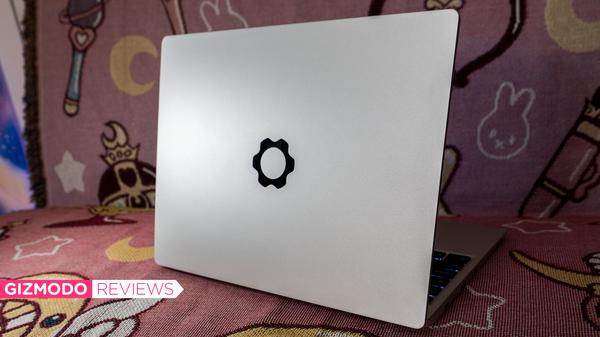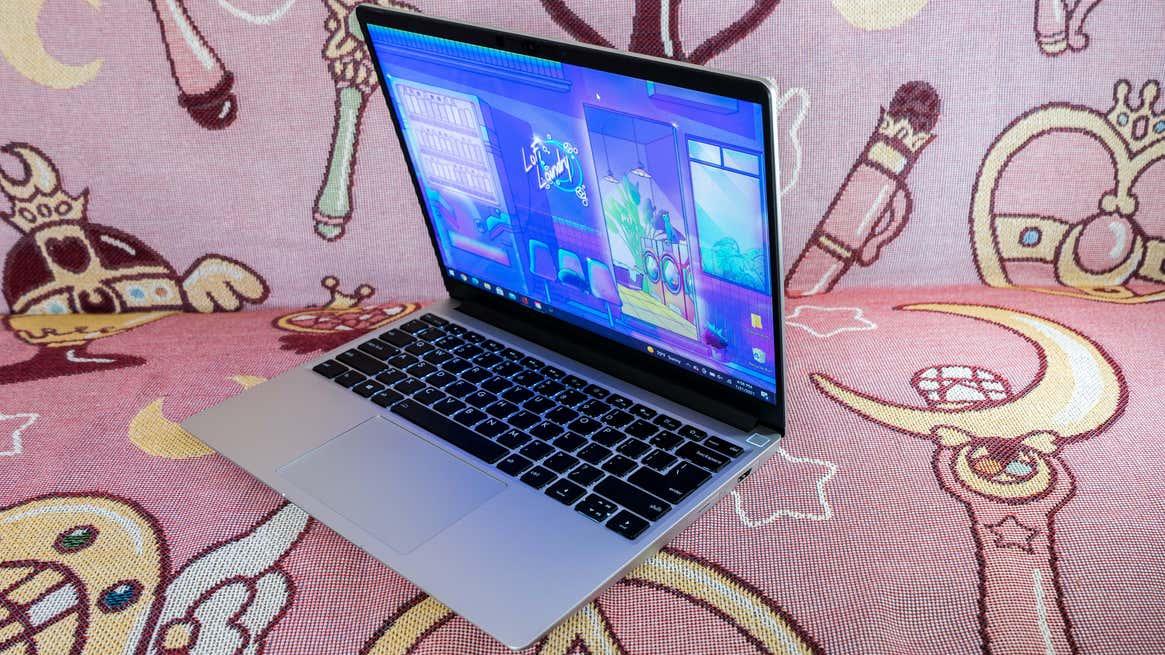"Beats Flex-fragment design special edition" is now on sale on Apple's official website
11/03/2022

Modular type that repeats appearing and disappearing, but this time!
I want to change the parts of my laptop like a desktop and use it as I like. I want to use it for a long time while leaving the usable part and repairing it. Here are my impressions of the dream modular notebook PC "Framework" that fulfills such desires!
FrameworkLaptop
What is this? : Modular laptop.
Price: From $750 (about 83,000 yen).
Things I like: Light and thin, keyboard is easy to type, easy to replace expansion packs.
What I don't like: Battery life, trackpad, gets a little hot.
Modular is a machine that can be easily replaced with components. On smartphones, the project Ara, which Google was doing for a moment, is still fresh in our memory. LG followed suit a few years ago with a semi-modular Android phone, but it didn't sell very well. The modular concept itself is being taken over by Fairphone and other companies, but it has yet to break into the mainstream.
So I don't expect much from Framework, but it's a fully modular laptop that can be DIY assembled at a low price starting at $750 (about 83,000 yen). Even if you are reluctant to replace the components embedded deep inside the board, you can choose from three pre-assembled versions of the Framework, and then simply replace the expansion card as needed later. It's super easy.
In short, the appeal of the modular system is the high degree of freedom that users can build it DIY. However, Framework is still the first machine, so we are at the stage of solidifying our position first so as not to be distracted by ready-made PCs.
Framework is a normal notebook everywhere you look. If the logo on the cover were an apple, you would mistake it for a Macbook. Using this as a base, you can change the frame around the screen to make it your favorite color.
When you open the cover of the logo, your name will be displayed like this. Flip it over and you'll find an expansion slot open/close switch and a T5 torque screw that can be opened with the included screwdriver. The board is located in the opening of the bottom panel.

A somewhat pre-made Framework laptop is available in three configurations. The review machine is a $ 1,400 (about 155,000 yen) Performance version (Intel 11th generation Core i7-1165G7, memory 16GB, storage 512GB), but the remaining two are base versions ($ 1,000: about 110,000 yen, i5 -1135G7, memory 8GB, storage 256GB) and the top Professional version ($ 2,000: about 220,000 yen, Core i7-1185G7, memory 32GB, storage 1TB). Both support WiFi 6 and Windows 10.
There's even a DIY edition, starting at $750. You can choose your favorite configuration from a wider range of options, such as 64GB of memory and up to 4TB of storage, and if you wish, it will be delivered with Linux already installed.
No matter which configuration you choose, the display is a 13.5-inch display with a 3:2 aspect ratio and 2,256 x 1,504 resolution. On the top right is a hardware privacy switch, a 1080p camera, and a switch for the built-in microphone, which houses a 55Wh battery, two 2W speakers, and two microphones. The power button has a built-in fingerprint sensor, so it's very convenient (although the first time I got a reading error).
There are a total of four expansion bays, two on each side. While it's nice to be able to expand just by inserting an expansion card here, the downside is that it doesn't have as many ports as the Chromebooks we've reviewed in the past. Sometimes you have to choose between doing it in a slot or an external HDD. In my case, I used the microSD & HDMI port on the right side and the USB-A & USB-C slot on the left side in my settings. By the way, the headphone jack is in the frame above the left expansion bay.
Expansion cards can be replaced with other than the DIY version, and this is a customization element not found in conventional notebooks. The module itself is designed like an accessory that can be used by plugging it into an Android device. You plug the USB type-C port into the expansion bay for it, and it's like inserting a cartridge into a game console. It's nostalgic because it's a bit catchy. When inserting it, you need to be careful to insert it straight, but once it clicks into place, you don't have to worry about it coming off.
The included screwdriver can also be used as a disassembly tool spudger, so disassembly work can be done with this one. The official procedure is illustrated, so it is easy even for beginners. Unplug the PC from the power supply, take out the expansion card from the box, loosen the 5 screws on the bottom and remove the panel to expose the board. You can also yank out speakers, audio flex cables, and take out screens, webcams, and Wi-Fi chips. The best part is that the RAM can be replaced. I used to be able to replace the RAM on my old MacBook Pro (a trick that was very popular at parties), but after I traded it in for a thinner and lighter model, I couldn't do it myself. When I disassemble the Framework, I realize that the contents of the desktop tower and the notebook are not much different, they are just the same components laid out flat. It's a matter of course, but I realize it again.
The Tiger Lake processor soldered inside the Framework is also destined to become old, but the Framework can be upgraded to the latest specs in no time by replacing the mainboard. Framework says that the mainboard works 100% correctly even when disconnected from the system. In other words, even if you don't replace everything, you can continue to use it just by buying a little bit of the contents. The main board was originally developed and sold on the Framework marketplace. Details on all system updates are unknown, but at least the chassis, monitor, and expansion cards don't need to be thrown in the trash.
Framework is equipped with the same Core i7-1165G7 as Samsung Galaxy Book Pro and Razer Book 13, and has a similar configuration of 8 to 16GB of RAM. The Framework is 16GB, so I wasn't too worried about the benchmark results at first, but it didn't grow as much as I expected for this much memory capacity.
Geekbench 5 beat the Galaxy Book Pro only in single-core tests, and by a close margin. Although it was in line with the Razer Book 13 in the multi-core test, it scored the lowest among the three models in the Geekbench comprehensive performance test. I could barely keep up in the WebXPRT test, Handbrake took 13 minutes and 36 seconds to encode the video, over a minute longer than Samsung's (12 minutes and 29 seconds), and the battery life wasn't great. In my usual Gizmodo test, it only lasted 5 hours and a few minutes (the $999 M1 MacBook Air lasts 14 hours).
Overall, it's not a big difference, so I'm not worried about the daily tasks, but I just thought that if I didn't get hot, I could get a better score. It also has an "unusually large" 65mm x 5.5mm cooling fan, dual 5mm heat pipes, and a copper cooling fin pack, which makes a humming sound, so I thought it would be a good idea to cool the CPU. On the bench, the body temperature is 108 degrees Fahrenheit (about 42 degrees Celsius), and it is often too hot to touch. I know that a gaming PC that can withstand high loads will need to cool the GPU, so it will make a buzzing noise. Reducing the fan speed in the Windows 10 settings seems to calm it down a bit (Framework's recommended noise countermeasure), but even at the lowest setting, the temperature near the function keys was 96 degrees Fahrenheit (about 35.6 degrees Celsius).
Framework laptops are Intel's standard integrated graphics chips, so if you're going to be playing virtual card games occasionally, don't expect much more processing power. I tried the game bench for the time being, but "Shadow of the Tomb Raider" stops at 17 FPS. It didn't stretch as much as it buzzed.
The backlit keyboard feels great, and I was able to type 98 words per minute. If it wasn't for the hot body, I could have entered more blogs. The touchpad was not good enough, so I used an external mouse. Of course, the keyboard and touchpad can be replaced. The language and layout can also be changed as needed.
Framework is not the first modular PC for the masses. Other companies such as Intel's NUC 9 Extreme Kit are also available. It's nice that gaming PC manufacturers can also replace components! Forward. But well, there are places like Alienware that use proprietary parts that are too special to be popular with the general public.
Framework laptops also have some improvements that need to be made, so if it were me, I'd pass on jumping right in. The price isn't exorbitant, but if I were to buy a new notebook now, I'd probably choose a well-known manufacturer. Framework laptops have bulky expansion slots, not many ports, sub-par batteries, and heat concerns. If the parts can be disassembled, due to layout restrictions, it may not be possible to disperse the heat.
I'm also worried about whether hardware support will continue beyond the next generation. According to Framework, they are working with chip vendors to support future upgrades. Anyone who buys the Framework should be prepared to receive updates on the parts they can buy. There are also plans to launch a marketplace where users can sell their own parts and modules.
You've read this far, you're the best! Don't miss $750-2,000 for meaningful experiments! Or rather, everyone who has increased their willingness to buy will not stop anymore. Come on, go forward. Framework is certainly easy to use. This is also where other companies that have tried modular systems have struggled.
It would be great if this was a shot of camphor for the big laptop makers to join the modular wave. Especially since the Biden administration has suddenly attracted attention to the repair rights movement. Notebook PCs are chosen because they are space-saving and have the same processing performance as desktop PCs, but unfortunately the repair part is. Framework's notebooks may not be the best, but I would like to commend them for turning the concept of "using a notebook for a long time by upgrading parts without having to replace the entire notebook" into a reality. I wish this kind of usage became commonplace. No, it's really bad if you don't.